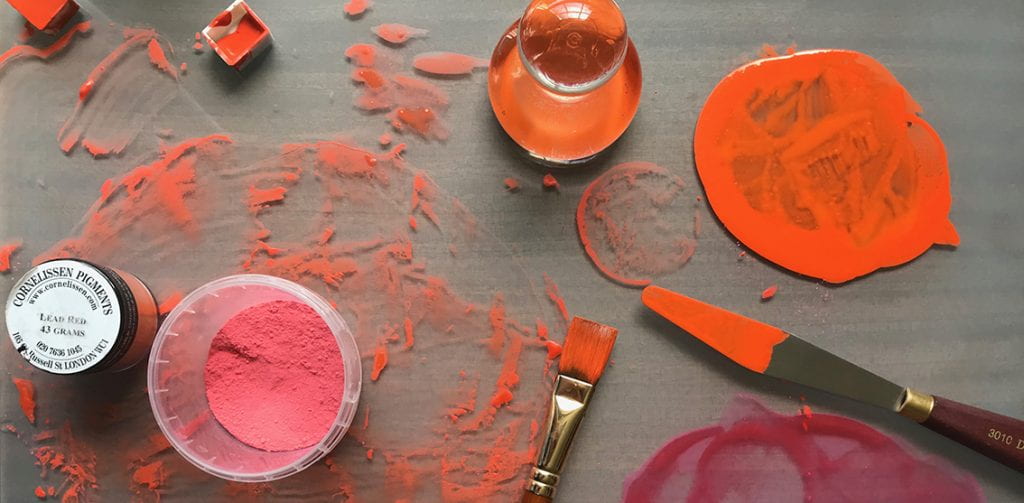A Colour A Day: Week 48
By Ruth Siddall, on 21 February 2021
A Colour A Day; Week 48. 15-21 February
Jo Volley writes…
This week are colours are seven earths generously gifted to me by their makers and accompany George Szirtes’ wonderful poem Soil.
‘Soil takes place in England on a train journey. I was taking a ride I think from London up to Yorkshire and I looked out at the soil, the earth and I thought I recognise that colour – where does that colour come from? And what does it mean to me? It seemed to be saying something, it seemed to be saying something and it brought to my mind the subject of belonging – to the soil, or to that soil.’ George Szirtes
Soil
What colour would you call that? That brown
which is not precisely the colour of excrement
or suede?
The depth has you hooked. Has it a scent
of its own, a peculiar adhesiveness? Is it weighed,
borne down
by its own weight? It creeps under you skin
Like a landscape that’s a mood, or a thought
in mid-birth,
and suddenly a dull music has begun. You’re caught
by your heels in that grudging lyrical earth,
a violin
scraped and scratched, and there is nowhere to go
but home, which is nowhere to be found
and yet
is here, unlost, solid, the very ground
on which you stand
but cannot visit
or know.
From The Budapest File (Bloodaxe, 2000) George Szirtes 2000; used by permission of the owner. Click to listen to George reading Soil.
Colours read from top to bottom on W&N watercolour paper:
Christine Chua’s Singapore Ochre
Chalybeate – Cohen’s Fields Fountain JV/2020
Gail Lamarche’s Arizona Red
Penelope Kupfer’s Waterfall Red – Brazil 2019/20
Penelope Kupfer’s Roadside Red – Brazil 2019/20
Hampstead Heath no.6 JV/2020
Onya McCausland’s Six Bells Burnt Ochre (oil paint)


Chalybeate Fountain, Cohen’s Fields, Hampstead Heath
 Close
Close




 Henry Levison inventor of Liquitex.
Henry Levison inventor of Liquitex.




